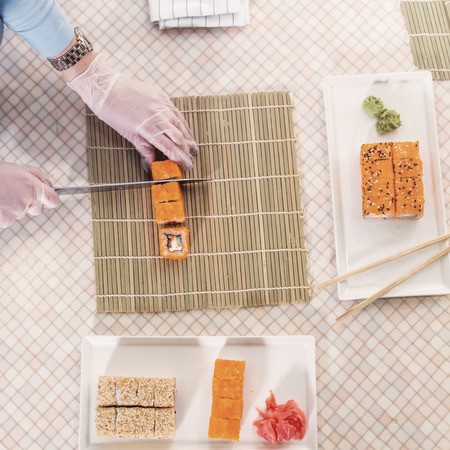The Japanese, king of cutting !!
In Japan, cutting techniques are very different from those used in Europe. First of all, they are masters in the preparation of food and the decoration of dishes. The origin of this ancestral know-how is based on logical evidence: food must be cut up to make it easier to grasp with chopsticks.
There are many different shapes of cups with different names: “sengiri” (in strips), “hyoshigi” (in strips), “wagiri” (in slices), “arare” (in dice), “hangetsu” (in half moons), “tanzaku” (in sticks), “sainome” (in dice), “sasagaki” (in chips) or “hanagir” (in flower shapes).

Different types of Japanese knives for different uses.
There are a multitude of Japanese knives, each with its own specific use. It is very likely that in professional kitchens or even in private homes you will find this type of model :
- The SANTOKU is a versatile knife that can be used to slice meat, fish and vegetables…
- The NAKIRI, strongly resembles a chopper but with a smaller blade. It is often used for cutting vegetables.
- The SUHIKIRI, is a rounded knife that has been developed for easier cutting of nori maki (sushi).
- The GVUTO is a knife specially dedicated to cutting meat.
- The DEBA, the Japanese will favour the use of this knife whose asymmetrical blade will allow to slide on the dorsal edge of the fish.
- The SASHIMI BOCHO, is very simply used for the realization of sashimi.
- The USUBA, is a knife specialized in the carving of fruits and vegetables.
In short, you will have understood that this is only a small glimpse of Japanese cutlery.
A certain technique !!
In most Japanese cutting situations, it is done by pushing the food to be cut by the cook sometimes even with force because some knives such as the Deba or the Sashimi Bocho have a blade that is a little too rigid. At the end of the cut, it is very important to disorient the cut by a slight movement of the wrist, in order to eject the finely cut slice.
of the cut, it is very important to disorient the cut by a slight movement of the wrist, in order to eject the finely cut slice.


